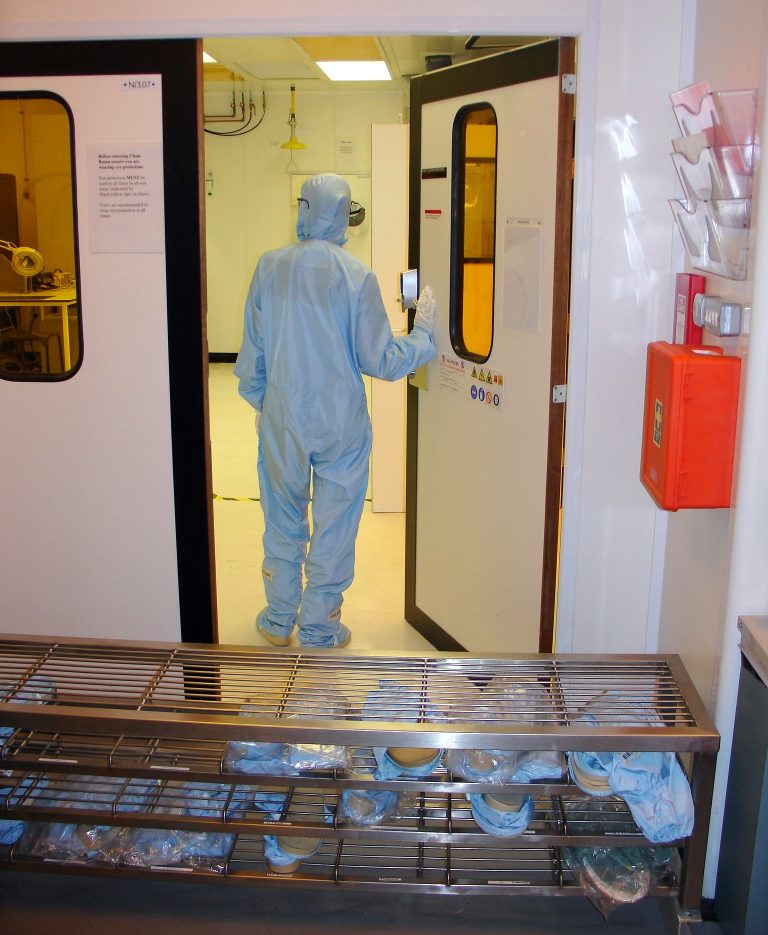Tổng hợp
What is a cleanroom
Typically used in manufacturing or scientific research, a clean room is a controlled environment with low levels of pollution such as dust, airborne bacteria, dust particles and chemical vapors. Exactly, clean rooms have a pollution control level that is determined by the number of particles per cubic meter at a particular particle size. The ambient air inside a typical city environment contains 35,000,000 particles / cubic meter, 0.5 micron in diameter and larger, which corresponds to ISO 9's cleanroom, the lowest level of cleanroom standards.
Clean room overview
Cleanrooms are used in most industries where small particles can adversely affect the manufacturing process. They vary in size and complexity and are widely used in industries such as semiconductor manufacturing, pharmaceuticals, biotechnology, medical devices and life sciences, as well as manufacturing. key processes in the aerospace, optics, military and the Department of Energy.
Clean rooms are spaces that contain various environmental materials such as temperature, humidity and pressure to minimize particulate pollution and control other environmental parameters. The main component is the HEPA (High Efficiency Particulate Air) filter, which is used to trap particles with a size of 0.3 microns or more. All air delivered to the clean room passes through HEPA filters, and in some cases, if strict cleaning is required, use ultra-light air filters (ULPA).
Employees selected to work in cleanrooms are extensively trained in pollution control theory. They enter and exit clean rooms through airlocks, bathrooms and / or gowns, and they must wear special clothing designed to trap contaminants produced naturally by the skin and body.
Depending on room type or function, the employee's coat may be a lab coat and hair tie, or the width should cover all containing only breathing room.
Cleanroom clothing is used to prevent waste from the wearer's body and pollute the environment. Restroom clothing must not contain particles or fibers to prevent environmental contamination by personnel. This type of personnel contamination can degrade product performance in the semiconductor and pharmaceutical industries and it can cause cross-contamination between healthcare workers and patients in the medical industry.
Apparel will include footwear, footwear, aprons, beard, bouffant cap, overalls, mask, tunic / lab coat, gown, gloves and finger, hair mesh, hood top, sleeve. The cleanroom clothing type used should reflect the cleanroom and product specifications. Low level restrooms may only require special shoes with completely slippery soles that do not track dust or dirt. However, the bottom of a shoe should not pose a slip hazard because safety always takes precedence. Usually a restroom is required to enter a clean room. At level 10,000 clean rooms it is possible to use simple coats, head covers and shoes. For level 10 clean rooms, a careful dressing procedure is required with complete covering of shoes, boots, gloves and breathing air enclosure.
Original clean room air
Clean rooms maintain air with particles through the use of HEPA or ULPA filters, the use of laminar filters, or the use of mixed airflow. The Laminar principle, or directional airflow systems, directly filters down air in a constant flow. Waterproof air flow systems are typically used above 100% ceilings to maintain constant, unidirectional flow. Yeast flow standards are generally stated in portable workplaces (LF hoods), and are required in ISO-1 through ISO-4 classified cleanrooms.
Proper clean room design encompasses the entire air distribution system, including provisions for full, downstream air recovery. In tall rooms this means low wind energy is used around the perimeter of the area. In horizontal flow applications, it requires the use of return air at the downstream boundary of the process. The use of ceiling-air returns is in conflict with the proper clean room system design
Cleanroom Classifications
Clean rooms are classified by cleaning the air. In the US Federal Standard 209 (A to D), the number of dust particles less than and greater than 0.5mm is measured by one mass of air, and this number is used to classify the cleanroom. This figure is also accepted in the most recent version of the 209E Standard. Federal Standard 209E is used domestically. The newer standard is TC 209 of the International Standards Organization. Both standards classify a cleanroom by the number of particles found in the laboratory's air. The FS 209E and ISO 14644-1 cleanroom classification standards require specific particle count measurements and calculations to classify the cleanliness level of a clean room or clean area. In the UK, British Standard 5295 is used to classify clean rooms. This standard will be superseded by BS EN ISO 14644-1
Cleanrooms are classified according to the number and size of particles allowed per volume of air. Large numbers such as "class 100" or "class 1000" refer to FED_STD-209E, and denote the number of particles of size 0.5 mm or greater allowed per cubic foot of air. The standard also allows interpolation, so an example can be described: "class 2000."
A small number refer to ISO 14644-1, the decimal logarithmic index of the number of particles 0.1 μm or greater allowed per cubic meter of air. For example, an ISO 5 cleanroom has a maximum of 105 = 100,000 particles / m³.
Both FS 209E and ISO 14644-1 have a log-log relationship between particle size and particle concentration. For that reason, there is no such thing as zero particle concentration. Typical room space is approximately 1,000,000 or ISO 9.

